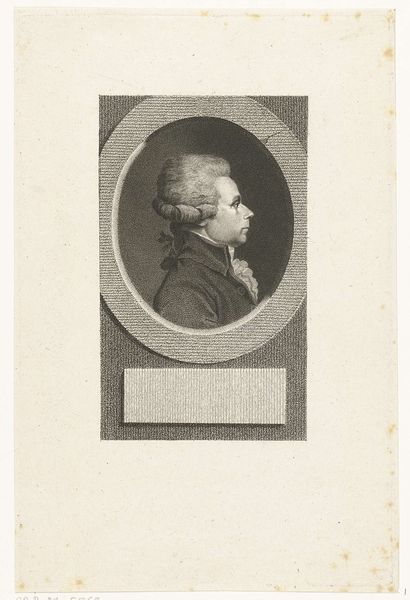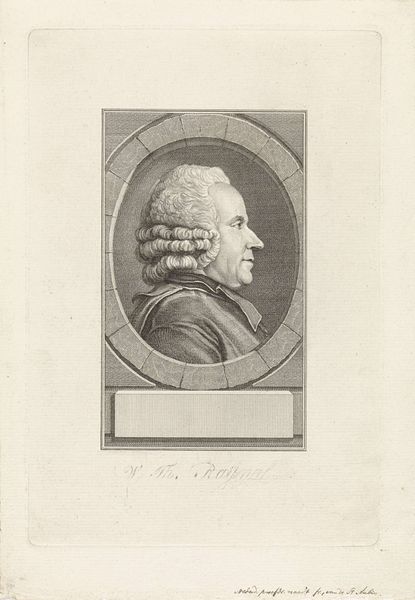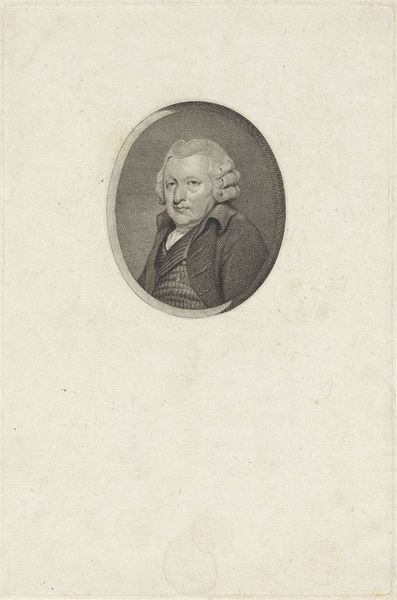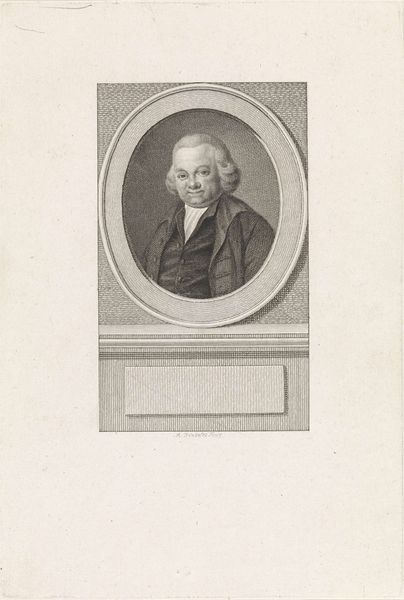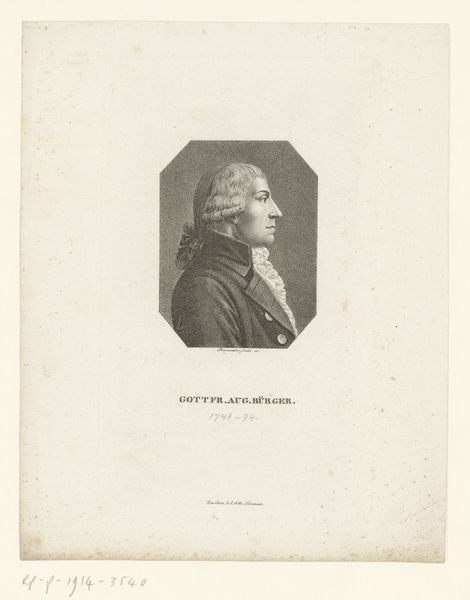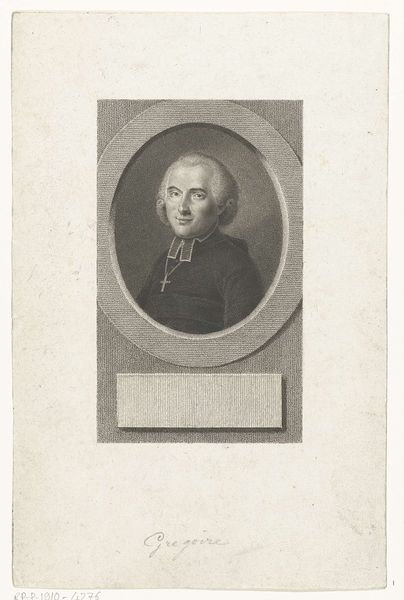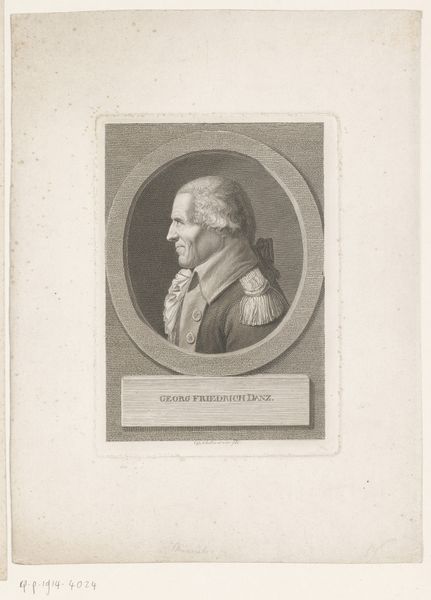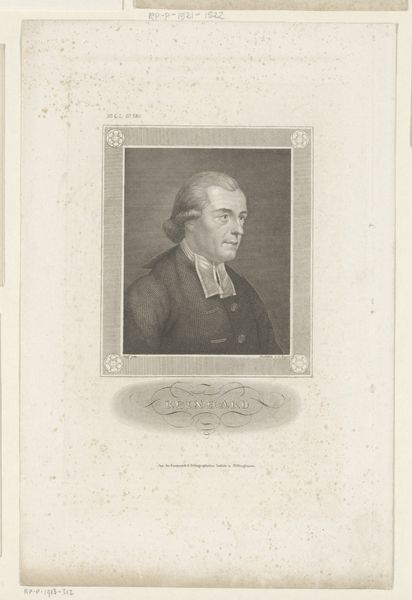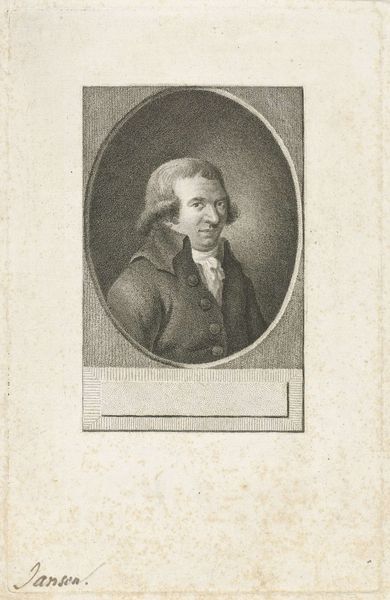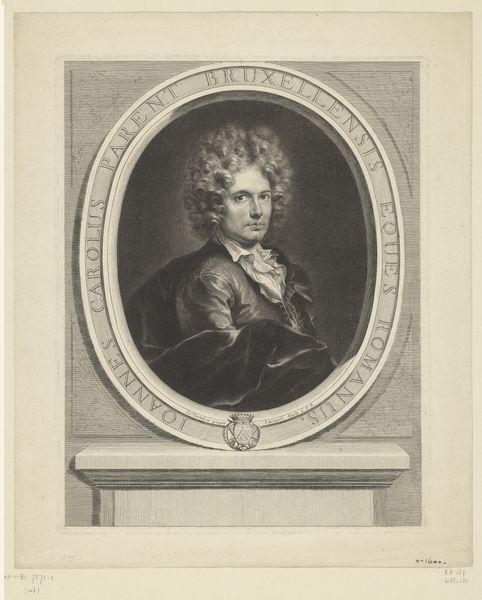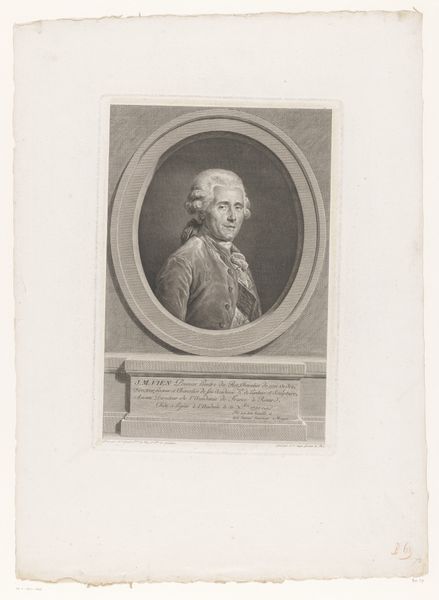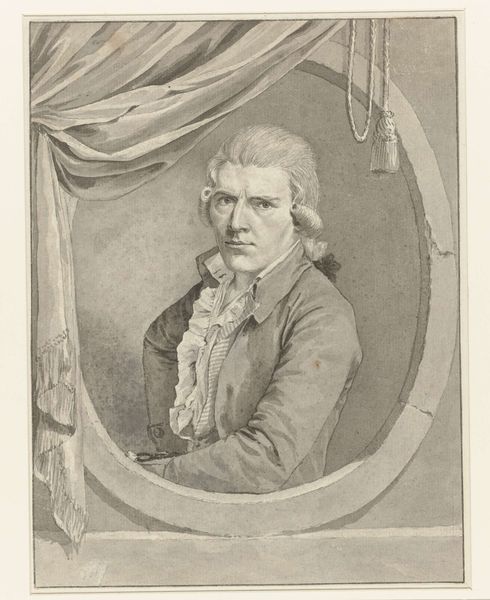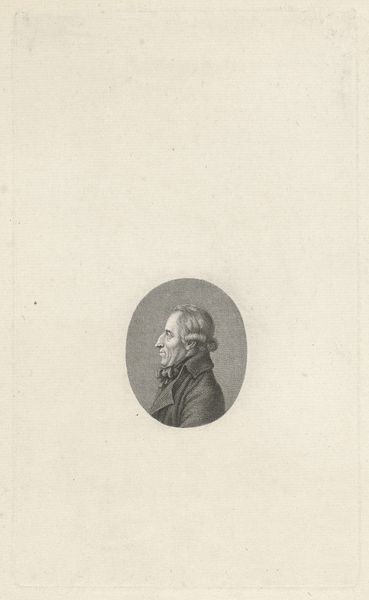
print, engraving
#
portrait
#
neoclacissism
#
16_19th-century
# print
#
form
#
line
#
academic-art
#
engraving
Dimensions: height 234 mm, width 168 mm
Copyright: Rijks Museum: Open Domain
Curator: Here we have Johannes Christiaan Bendorp's "Portret van predikant Willem Christiaan van Manen," created in 1808. It's an engraving, currently held at the Rijksmuseum. What strikes you first about this piece? Editor: The severe linearity is what initially captures my attention. It's a rather cool portrait; that neoclassicist style always brings to mind Roman stoicism. Everything is so crisp and delineated. Curator: Exactly. Notice the sharp, precise lines, hallmarks of the engraving process. Look at how the engraver employed various line weights to give depth to Willem's face. It reflects the labour-intensive method characteristic of printmaking. Editor: And the choice of engraving reinforces a particular image. We’re given a serious, intellectual man. I note the tight curls are meant to convey his intelligence, an emphasis on cerebral capacity which was typical in portraits of the era. What I am curious about are the intentions with that vacant space in the plaque just below. Curator: It is intruiging. That blank cartouche begs for an inscription, an addition of information about the subject that the printmaking process could disseminate widely. Imagine it personalized to honor or mock van Manen— print allowed flexibility. Editor: Or, it makes me wonder whether leaving it blank universalizes the portrait somewhat? Removing details allows the viewer to reflect on larger concepts of religious authority or duty instead. Curator: Perhaps it could signify adaptability—a print being infinitely reproducible meant information was meant to travel, shift. Was printmaking meant to disseminate truth or create it? That empty space can take on varied meanings over time. Editor: Yes, its openness encourages speculation. Beyond simply being a clergyman's portrait, this raises questions about representation itself. Does the engraving immortalize or standardize? Does the neoclassical style elevate him or flatten him within a system? Curator: Excellent questions! Consider also how prints operated within a gift economy; prints served different functions depending on social exchanges. What meaning might emerge when you understand this portrait's circulation? Editor: Considering the neoclassicism—a deliberate nod to a Roman Republicanism— I find the historical references the most gripping. The medium, technique and image all reflect each other. Curator: I agree completely; from a material perspective, this work reveals fascinating dimensions about the modes of production that underpinned early 19th-century print culture.
Comments
No comments
Be the first to comment and join the conversation on the ultimate creative platform.
